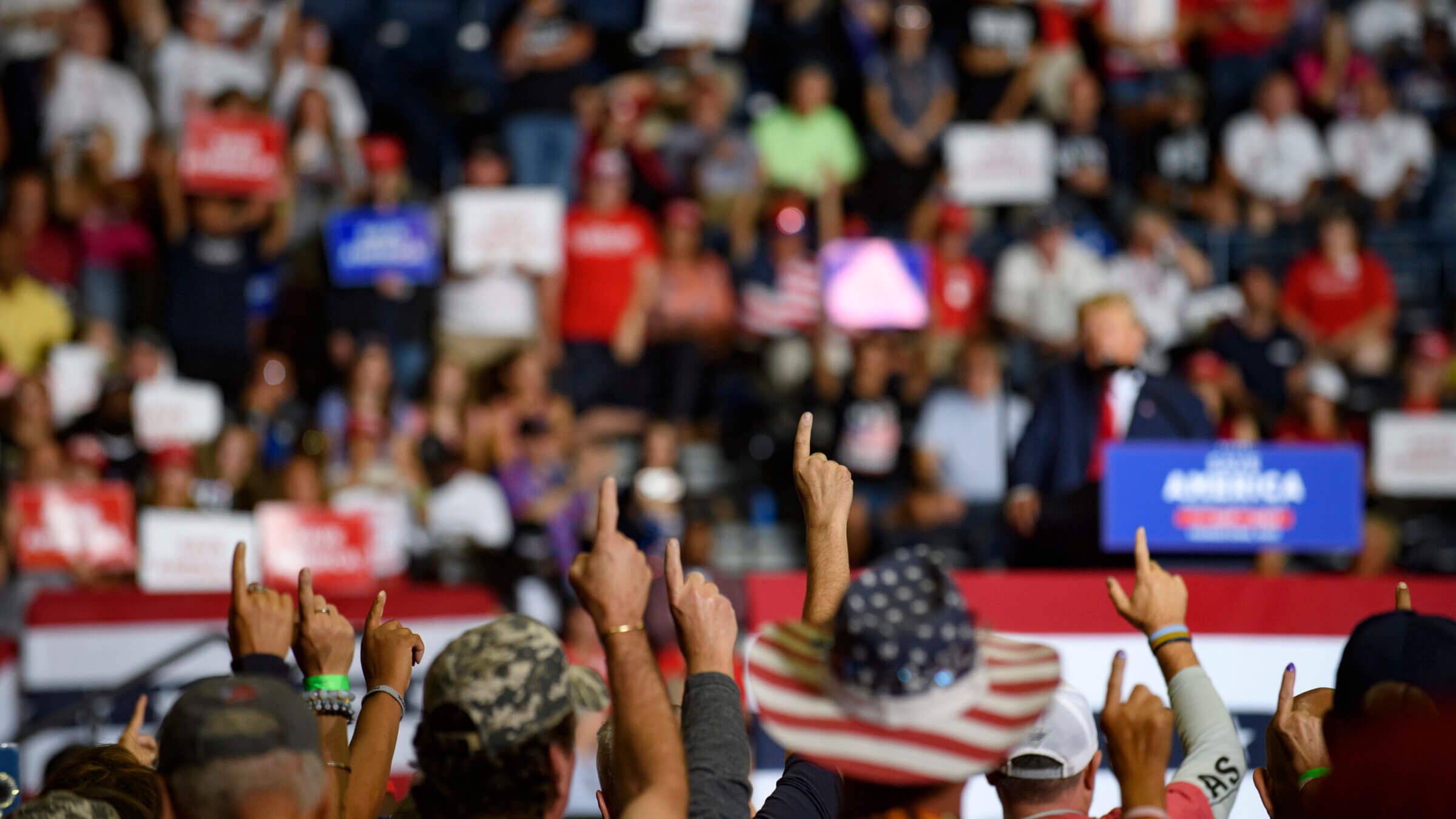When Trump supporters gave him the finger, was it really a Nazi salute?
Experts in extremism and Trump aides alike were confused by the gesture, which some think is an endorsement of the QAnon movement

Audience members put their index finger up while President Donald Trump speaks at a Save America Rally. Courtesy of Getty Images
At a Trump rally in Ohio last weekend, thousands of supporters thrust their index fingers into the air as the former president delivered his stump speech, causing experts across the internet to raise the alarm: Was the gesture a form of hate speech?
Many people are, well, confused. Could a crowd simply pointing upwards really be a hate sign? Don’t sports fans regularly chant “We’re number one!” while pointing giant foam index fingers in the air?
No one is sure. Perhaps it was simply a sign of support for Trump or a reference to his “America First” platform. Some experts drew parallels to gestures seen at an evangelical conference, or noted similarities to the Nazi sieg heil. Major outlets including The New York Times pointed out that the song playing during Trump’s speech is identical to a QAnon anthem called “WWG1WGA;” the title is short for the group’s slogan, “Where we go one, we go all.” The pointed finger might be in support of the song.
Even many Trump followers are baffled, discussing the same theories as mainstream news outlets, hate speech experts and Twitter talking heads.
Part of the reason that these gestures are so hard to categorize is because they change so quickly. New ones are invented almost constantly within the bowels of the internet as part of the churn of memes and nested references that comprise internet culture. Sometimes, even people in the know can miss the references; by the time a symbol is recognizable to more casual, less obsessive followers, it will be near the end of its life.
Plus, hate symbols are designed to look innocuous or basic, and to be hard to track — that’s how they escape notice from algorithmic filters and teams screening social media for hate speech.
Hate speech, as listed in the Anti-Defamation League’s database, includes such basic options as “100%,” which white supremacists use to reference the idea of a completely white society. Of course, to laypeople, it also represents 100% of anything. It’s also commonly used online to indicate complete agreement.
Other numerals, including 1, 2, 12, 13, and 14, can also be hate symbols. “Coors,” a major brand of cheap, light beer — that does not endorse white supremacy — can also stand for “Comrades of our racial struggle.” Adherents often use the same typeface and logo of the beer.
In the case of the raised finger at the Trump rally, the phenomenon is probably most similar to the “OK” hand symbol. You know the one — it’s a circle that’s made when the index finger touches the thumb, generally seen as a positive gesture. People use it while scuba diving to communicate well-being underwater. There’s even an emoji for it.
Yet, in a phenomenon tracked by websites such as KnowYourMeme and the ADL, the meaning of the hand sign began to shift around 2017, when users on forums such as 4chan attempted to troll journalists about the basic hand motion. The position of the fingers created a W and a P, and stood for “white power,” they said, hoping left-wing journalists would look stupid when they panicked. (It worked.)
Over time, the irony faded, and the gesture was seriously adopted by white supremacists, including the Christchurch shooter, who flashed the sign in the courtroom.

Does this mean all people using the OK sign are white supremacists? Of course not; most people are likely unaware of its other meanings. But those in the know might use it otherwise.
Whatever Trump supporters meant by their raised fingers at the rally, it’s likely that it will now be adopted by QAnon as a symbol endorsing the movement’s conspiracy theories. After all, adherents of the QAnon web of conspiracy theories have long been devoted to Trump. And AP News reported the former president has been more openly encouraging the group recently, even wearing a Q lapel pin. Similarly, white and Christian nationalists have long been fans of the 49th president; perhaps they, too, will adopt the pointed finger.
That doesn’t mean that every time a sports fan or a politician or a high school debate student making an adamant argument points at the ceiling, they’re referencing a hate group or a conspiracy theory. But it means they might be.




















